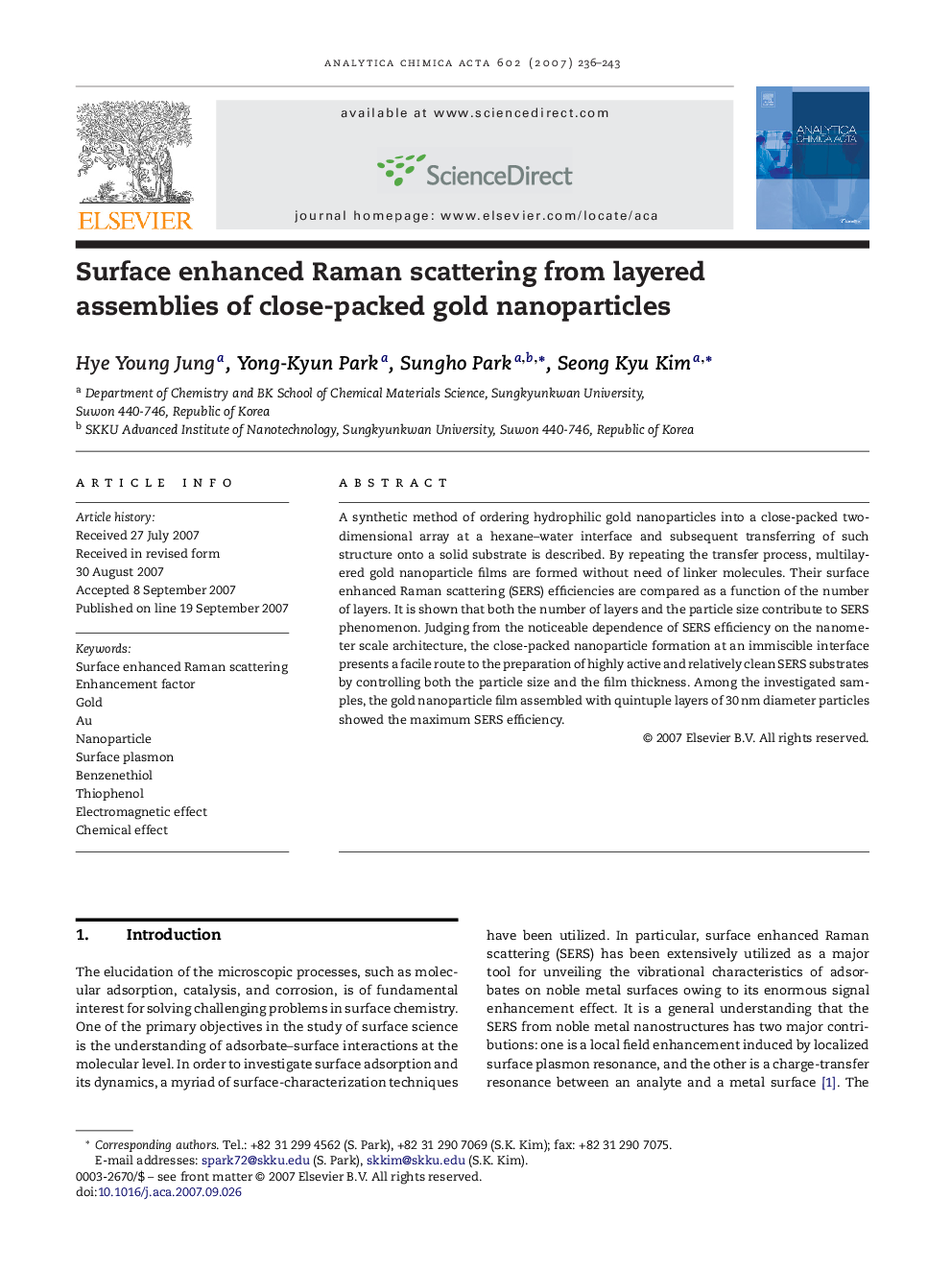| Article ID | Journal | Published Year | Pages | File Type |
|---|---|---|---|---|
| 1169607 | Analytica Chimica Acta | 2007 | 8 Pages |
A synthetic method of ordering hydrophilic gold nanoparticles into a close-packed two-dimensional array at a hexane–water interface and subsequent transferring of such structure onto a solid substrate is described. By repeating the transfer process, multilayered gold nanoparticle films are formed without need of linker molecules. Their surface enhanced Raman scattering (SERS) efficiencies are compared as a function of the number of layers. It is shown that both the number of layers and the particle size contribute to SERS phenomenon. Judging from the noticeable dependence of SERS efficiency on the nanometer scale architecture, the close-packed nanoparticle formation at an immiscible interface presents a facile route to the preparation of highly active and relatively clean SERS substrates by controlling both the particle size and the film thickness. Among the investigated samples, the gold nanoparticle film assembled with quintuple layers of 30 nm diameter particles showed the maximum SERS efficiency.
